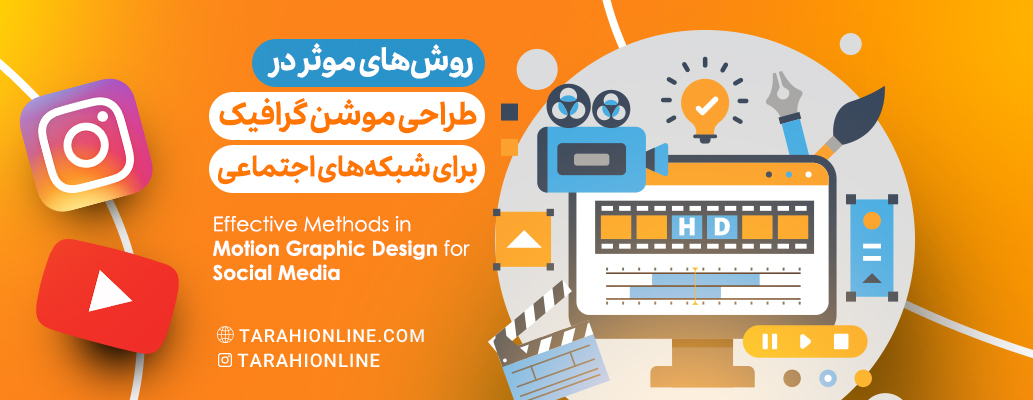
Today, motion graphics are recognized as one of the powerful marketing tools on social media platforms. This type of video content, with the combination of visual and animated elements, can help attract audiences and increase their engagement. In this article, we will explore the effective methods in motion graphic design for social media.
Principles of Effective Motion Graphic Design for Social Media
Simplicity and Readability: Motion graphics should be simple and readable so that the main message can be quickly understood. This means eliminating unnecessary elements and using clear and readable design. The use of concise text with appropriate fonts that are legible on mobile screens is important in this regard. Simple layouts and clean backgrounds can also help with better message comprehension. Remember that social media audiences are usually on the go and have limited time to view content. Therefore, the main message should be quickly and easily conveyed.
Visual Attractiveness: An appealing and harmonious visual design can help attract audiences and increase the level of engagement. Using creative colors, effects, and animations can be very effective in this regard. Choosing complementary colors that are consistent with the brand's color palette can contribute to an attractive visual design. Additionally, using smooth and rhythmic animations that capture the viewer's attention can be beneficial. Incorporating visual effects such as gentle transitions, dynamic motion graphics, and synchronized movements can also enhance the visual appeal.
Visual Storytelling: Utilizing visual narratives and storytelling in motion graphics can communicate the message more effectively to the audience. Presenting content in a storytelling format and using engaging characters and scenarios can be impactful. Visual storytelling adds expressive power and appeal to motion graphics. By using captivating characters and narrative elements, the message can be conveyed in a more focused and influential manner. This approach helps to create an emotional connection between the viewer and the content, and can also generate more motivation for user engagement and participation.
Alignment with Platform and Audience: Motion graphic design should be tailored to the specific characteristics of each social media platform and its target audience. Video duration, aspect ratio, animation speed, and content should align with the platform's requirements and the audience's expectations. For example, motion graphics for Instagram should be short and in a 1:1 aspect ratio to be displayed effectively in the user's feed. In contrast, for YouTube, longer videos and a 16:9 aspect ratio may be more suitable. Additionally, the content of the motion graphics should be relevant to the preferences and needs of the audience on each platform. For instance, entertaining and challenging content may be more appropriate for TikTok, while educational and informative content may be better suited for YouTube.
Call-to-Action: Incorporating a clear and prominent call-to-action in motion graphics can lead to increased user engagement. Calls to share, visit a website, or make a purchase are examples of such actions. The call-to-action should be presented in a clear and prominent manner within the motion graphics to encourage viewers to take the desired action. This call-to-action can be visual, textual, or a combination of both. To enhance the effectiveness of the call-to-action, visual elements such as prominent buttons, relevant animated movements, and motivational messages can be used. Positioning the call-to-action at strategic points within the motion graphics is also crucial.
Branding Consistency and Repetition: Using consistent and recurring elements in the design of motion graphics can help reinforce the brand identity. The use of logos, colors, fonts, and a unified design style are effective in this regard. Establishing a unique and distinctive visual identity for the brand's motion graphics can contribute to better brand recognition and association in the minds of the audience. This, in turn, can lead to stronger emotional connections and greater brand loyalty. Incorporating the brand's logo, colors, specific fonts, and even familiar background music throughout the motion graphics can help create a cohesive and recognizable visual style. These repeated elements allow the audience to quickly identify the brand.
Conclusion In summary, considering the design principles of simplicity and readability, visual attractiveness, visual storytelling, alignment with platform and audience, call-to-action, and branding consistency and repetition can contribute to the creation of effective motion graphics for social media platforms. Digital marketing professionals and designers can leverage these principles to produce engaging and impactful video content.
Tarahi Online’s professional motion graphics design team is ready to provide you with services by implementing creative designs to create captivating teasers. For consultation and services, submit a request